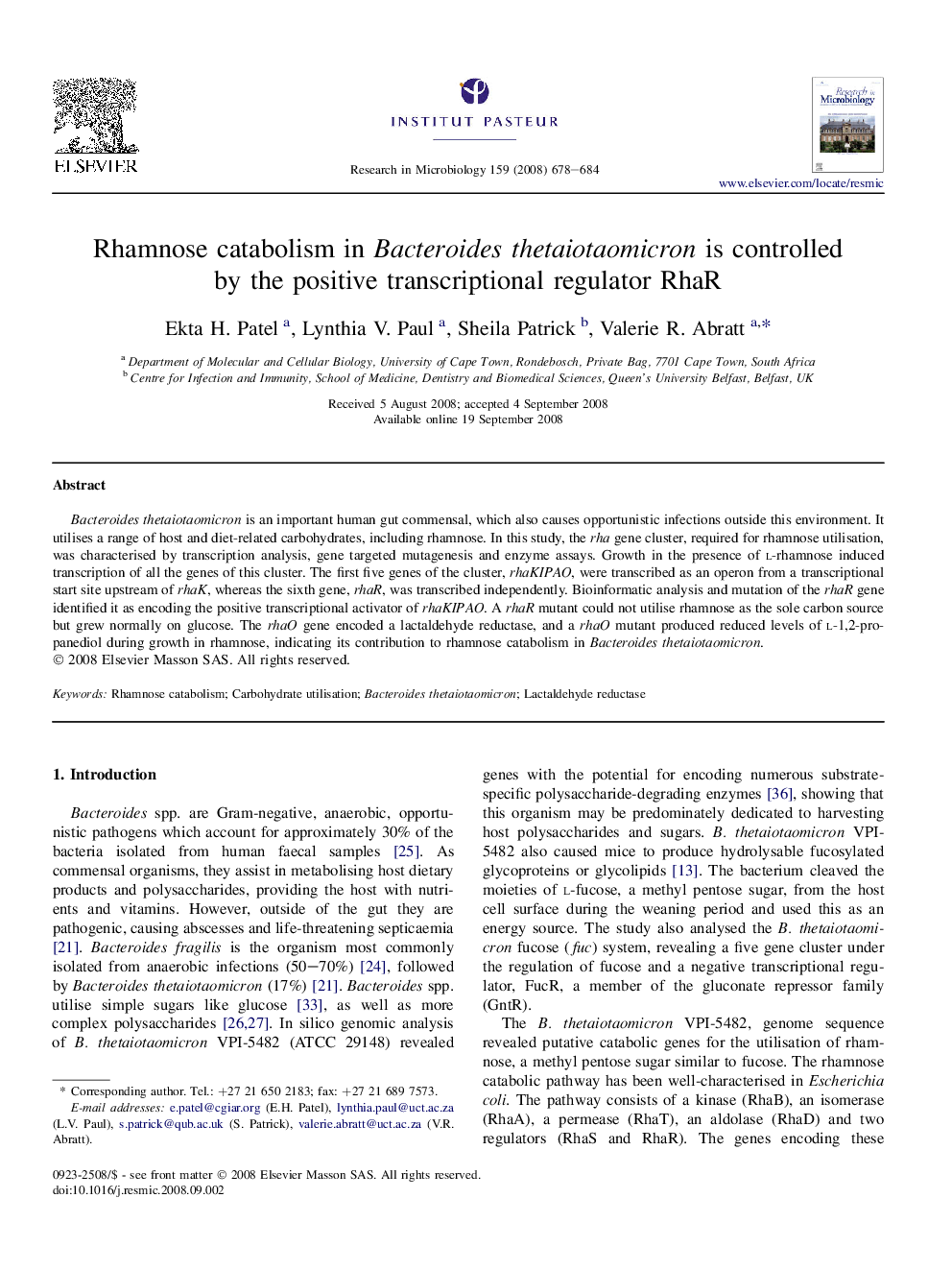| Article ID | Journal | Published Year | Pages | File Type |
|---|---|---|---|---|
| 6288205 | Research in Microbiology | 2008 | 7 Pages |
Abstract
Bacteroides thetaiotaomicron is an important human gut commensal, which also causes opportunistic infections outside this environment. It utilises a range of host and diet-related carbohydrates, including rhamnose. In this study, the rha gene cluster, required for rhamnose utilisation, was characterised by transcription analysis, gene targeted mutagenesis and enzyme assays. Growth in the presence of l-rhamnose induced transcription of all the genes of this cluster. The first five genes of the cluster, rhaKIPAO, were transcribed as an operon from a transcriptional start site upstream of rhaK, whereas the sixth gene, rhaR, was transcribed independently. Bioinformatic analysis and mutation of the rhaR gene identified it as encoding the positive transcriptional activator of rhaKIPAO. A rhaR mutant could not utilise rhamnose as the sole carbon source but grew normally on glucose. The rhaO gene encoded a lactaldehyde reductase, and a rhaO mutant produced reduced levels of l-1,2-propanediol during growth in rhamnose, indicating its contribution to rhamnose catabolism in Bacteroides thetaiotaomicron.
Keywords
Related Topics
Life Sciences
Immunology and Microbiology
Applied Microbiology and Biotechnology
Authors
Ekta H. Patel, Lynthia V. Paul, Sheila Patrick, Valerie R. Abratt,
